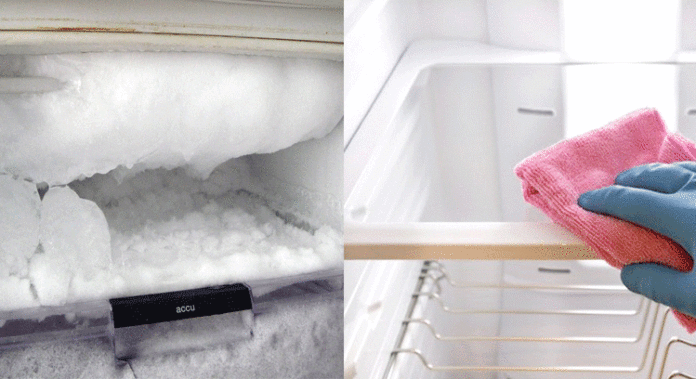
FRIDGES IN Spain certainly get used more during the summer months; and if you are perhaps responsible for a property or two that is being used by holiday visitors, you’re going to want to keep it clean and fresh at all times.
Here are a few useful preventions and cleaning tips…
The surfaces of white fridges and freezers seem to attract dirt, especially around the handles. Even the hardware shows fingerprints and spotting. But you can make your fridge or freezer look bright and shiny by using one of the following methods:
1. Scrub it with a mixture of equal parts of ammonia and water.
2. Rub it down with soda water, which cleans and polishes at the same time.
3. For a glossier finish, wash and rinse the surface, then apply car wax and buff it to a shine with a clean soft cloth.
4. Polish any chrome trim with a cloth dipped in surgical spirit.
5. Keep a tight seal
The flexible rubber or plastic gasket framing the inside edge of your fridge door seals cold air in and warm air out. When cleaning the fridge, don’t neglect it. Wipe grime – and mould – off with a soft cloth dampened with surgical spirit and finish by rubbing the gasket with a little baby oil to prevent cracking.
Scrub with salt
When new groceries get crammed into the fridge, it’s all too easy to displace a small bowl of leftover sauce at the back, which then gets wedged in at an angle and begins to leak. To get rid of any gummy mess that may result, sprinkle it with salt. Then dip a scrubbing pad or abrasive sponge in hot water and rub the stain vigorously. Repeat until it’s gone, each time wiping the area with a wet paper towel.
Litter box lesson
If cat litter can absorb the really pungent smells that emanate from your cat’s litter tray, it can certainly soak up the lesser odours that so easily arise in the fridge. Keeping a small, uncovered bowl of natural clay cat litter on a shelf of the fridge will help to block odours before they take hold.
Deodorise with a potato
To diminish fridge smells, peel a raw potato, cut it in half and place each half on a small saucer. Now place the potato halves on different shelves in the fridge. When the cut surface turns black, trim the black part and return the potato to the fridge with its absorbent powers restored.
Charcoal – Not just for the barbecue
Store three or four charcoal briquettes in the fridge to absorb odours. Put them in a small mesh bag on a back shelf. After a month, refresh the briquettes by warming them in a heavy stainless-steel saucepan, making sure the kitchen is well ventilated. When cool, return them to the fridge again.
A lemon-fresh fridge
Mould and mildew can take hold of your fridge and not let go – and banishing their odours takes drastic action. Squeeze a lemon into a cup of water and throw the peel in with the mixture. Unplug the fridge and empty it (we said it was drastic), placing ice-cream and other frozen items in a bath, sink or freezer bag filled with ice. Then microwave the lemon water to almost boiling and place it inside the empty fridge.
Close the door and let the deodoriser sit for half an hour. The citrus fumes will improve the smell and soften any accumulated food. Remove the bowl, wash the interior of the fridge and restock.
Time to defrost? Ways to speed up defrosting
If you have a freezer that doesn’t defrost itself, you can speed up defrosting to keep frozen foods from spoiling or going soft. Speed up the process by aiming a stream of hot air at the ice with a hair dryer.
Another trick is to boil water in a couple of saucepans, place them in the freezer (on trivets if the floor is plastic) and close the freezer door to trap the steam. In no time at all you should be able to pry off large slabs of ice with an ice scraper.
Use your oven when defrosting: If you have a self-cleaning oven, use it to store frozen foods as you defrost the freezer. These ovens are so well insulated that they should keep foods frozen for hours. Just remember not to turn it on.








